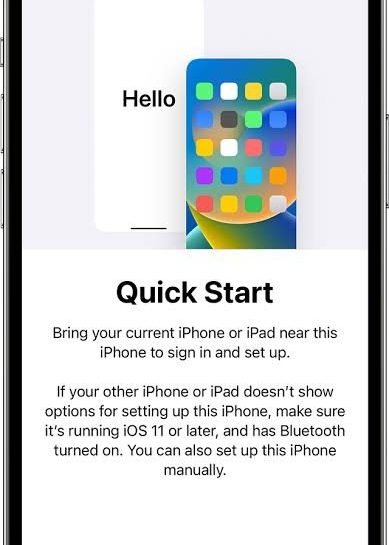In the modern digital world, transferring data between devices is an essential activity. With smartphones, tablets, and PCs becoming primary tools for communication, entertainment, and business, users need efficient, fast, and secure methods to move files, contacts, photos, and applications. Data Transfer APKs have emerged as powerful solutions to meet these needs. These apps simplify the transfer process, often removing the need for cables or complicated settings.
Data transfer apps are widely used to migrate from an old device to a new one, back up important files, or share media with friends and colleagues. In 2025, with the growing reliance on large multimedia files and cloud integration, these apps are evolving to support ultra-fast transfers, high security, and cross-platform compatibility. They leverage technologies like Wi-Fi Direct, Bluetooth, NFC, and cloud synchronization, making it easier than ever to move data seamlessly.
Moreover, data transfer apps are designed for ease of use. Even non-technical users can transfer gigabytes of files in minutes with just a few taps. With features like automatic device recognition, progress tracking, and error recovery, these APKs ensure that data is not lost or corrupted during the transfer process. They also often include options for selective transfer, allowing users to choose exactly which files, contacts, or apps to move.
What is a Data Transfer APK?
A Data Transfer APK is an Android package file specifically designed to install a data transfer application on your device. Unlike traditional app downloads from the Google Play Store, APK files allow users to install applications directly on their device, bypassing restrictions or regional availability issues. This is particularly useful when an app is not yet officially available in a specific country or when users want early access to beta features.
These APKs support a wide range of file types including photos, videos, documents, audio files, apps, and system settings. Many advanced APKs also include features like phone cloning, app backup, cloud synchronization, and multi-device management. The advantage of using APKs is that users can often access the latest versions and updates faster than waiting for the Play Store rollout.
Additionally, Data Transfer APKs are highly optimized for speed, security, and device compatibility. They can work across different brands and Android versions, providing seamless migration between devices. Whether you are transferring files from Samsung to Xiaomi, or from an older Android device to the latest model, these APKs simplify the process, ensuring that users retain all data without loss or corruption.
Key Features of Data Transfer Apps
Data Transfer APKs have evolved far beyond simple file-sharing tools. In 2025, these apps provide a comprehensive suite of features designed to meet the diverse needs of individuals, businesses, and tech enthusiasts. Understanding these features is essential for selecting the best app for your specific use case.
1. Cross-Platform Compatibility
Modern data transfer apps can move files between different platforms seamlessly. Whether it’s Android-to-Android, Android-to-PC, or Android-to-iOS, these APKs support various operating systems and device brands. This ensures that users upgrading to a new phone or switching platforms can retain all their important data without restrictions.
2. High-Speed File Transfers
Many APKs utilize Wi-Fi Direct, NFC, and peer-to-peer connections to achieve ultra-fast transfer speeds. Unlike traditional Bluetooth transfers, which are slow for large files, Wi-Fi Direct can transfer gigabytes of data in minutes. Some apps even allow bulk transfers of thousands of photos or videos simultaneously, saving users significant time and effort.
3. Comprehensive Data Support
A strong data transfer app doesn’t just move media; it handles contacts, messages, call logs, app data, system settings, and even custom configurations. This ensures a complete migration from one device to another without losing critical information. Users can select specific types of data to transfer or opt for a full device clone.
4. Backup and Restore Functionality
Many data transfer APKs include integrated backup and restore features, allowing users to securely store their data locally or in the cloud. This is especially useful for business users and content creators who cannot afford data loss. Backup options often include incremental backups, which update only the modified files, saving time and storage space.
5. Security and Encryption
Security is paramount when transferring personal or sensitive data. Reputable APKs employ end-to-end encryption during transfers to protect data from unauthorized access. Some apps also require user authentication or PIN verification before initiating transfers, ensuring only authorized users can move data.
6. User-Friendly Interface
Despite their technical capabilities, top apps prioritize intuitive design. Users can easily select files, preview them, and track progress with visual indicators. Features like drag-and-drop transfers, progress bars, and notifications ensure that even non-technical users can manage complex data migrations effortlessly.
7. Multi-Device Support
Certain APKs allow simultaneous transfers between multiple devices, such as migrating data from one old device to multiple new devices at the same time. This is particularly valuable for IT professionals, enterprises, or families managing multiple phones or tablets.
8. Cloud Integration
Cloud synchronization is increasingly common in modern apps. Users can transfer data to cloud storage services like Google Drive, Dropbox, or OneDrive, providing a secure backup and enabling remote access from any device. Cloud integration also ensures that data is preserved even if the original device is lost or damaged.
9. Customizable Transfer Options
Advanced APKs provide granular control over the transfer process. Users can prioritize certain files, compress media for faster transfer, or set schedules for automatic transfers. These features make the apps highly flexible and adaptable to different scenarios.
10. Analytics and Reporting
Some premium apps offer detailed analytics, showing users which files have been transferred, transfer speed, and storage usage. These insights help users optimize their data management practices and identify large or redundant files that can be cleaned up.
In essence, a modern Data Transfer APK is no longer just a utility app; it is a full-fledged data management solution, integrating speed, security, and advanced customization features. Selecting an app that combines these features ensures efficient, reliable, and secure data transfer in 2025 and beyond.
How Data Transfer Apps Work – Technical Insights
Data Transfer APKs operate through a combination of advanced technologies designed to ensure fast, secure, and reliable data migration between devices. Understanding the technical framework behind these apps helps users appreciate their functionality and optimize usage.
1. Transfer Protocols
Modern apps use several protocols to move data efficiently. The most common include Wi-Fi Direct, Bluetooth, NFC (Near Field Communication), and cloud-based APIs.
-
Wi-Fi Direct: This protocol allows devices to connect directly without a router. It’s much faster than Bluetooth and supports large file transfers, including videos, apps, and high-resolution photos. Transfer speeds can reach up to 250 Mbps in optimal conditions, making it ideal for bulk migrations.
-
Bluetooth: Though slower, Bluetooth remains useful for transferring smaller files, especially on devices with limited connectivity options. Its low energy consumption makes it suitable for mobile devices.
-
NFC: NFC allows for secure, short-range transfers. It is often used to initiate connections between devices before the actual transfer occurs via Wi-Fi Direct or other high-speed protocols.
-
Cloud APIs: Many apps integrate with cloud platforms (Google Drive, Dropbox, OneDrive) using secure APIs. Data is uploaded to the cloud and then downloaded to the destination device, providing flexibility for remote transfers.
2. File Scanning and Categorization
Before transfer, most APKs perform an automatic scan of the device’s storage to identify files eligible for migration. This includes media files (photos, videos, audio), documents, apps, system settings, contacts, call logs, and even application-specific data like WhatsApp backups.
The apps categorize files into folders or types for easy selection, allowing users to transfer specific data sets instead of the entire device. Some advanced apps even detect duplicate files and offer the option to skip them, optimizing storage and transfer efficiency.
3. Compression and Optimization
To accelerate transfer speed, many apps implement data compression algorithms. Images and videos are compressed without significant quality loss, reducing the overall file size and minimizing the time required for migration. Some apps also allow users to choose the compression level, balancing speed and quality according to their needs.
4. Security and Encryption
Data security is a critical component. Reliable APKs implement end-to-end encryption, meaning that files are encrypted on the source device and can only be decrypted on the target device. AES-256 encryption is a common standard in top-tier apps, ensuring protection against hacking or unauthorized access.
Some apps also use temporary encryption keys for each transfer session, adding an additional layer of security. Password protection or PIN verification may be required before initiating the transfer, preventing unauthorized users from intercepting sensitive data.
5. Real-Time Monitoring and Error Handling
During transfers, APKs provide real-time monitoring of progress. Users can see estimated transfer time, file count, and speed metrics. If an error occurs—like an interrupted connection or corrupted file—the app usually has automatic recovery protocols. These can retry failed transfers, skip corrupted files, or notify users of necessary actions.
6. Cross-Platform Data Compatibility
Some apps include data format conversion tools to ensure compatibility across different platforms. For instance, transferring contacts from Android to iOS requires converting VCF files into a format that Apple devices recognize. Similarly, media files may be transcoded for optimal playback on the target device.
7. Automation Features
Cutting-edge apps incorporate automation features to make transfers seamless. Users can schedule transfers at specific times, select automatic backup intervals, or enable smart migration, where the app detects newly added files and transfers them without manual intervention. This is especially useful for businesses or users with large volumes of data.
8. Analytics and Reporting
Many APKs now include transfer analytics, providing detailed reports on the number of files transferred, time taken, total data size, and speed. These insights help users identify bottlenecks, optimize transfer settings, and manage storage more effectively.
9. Real-World Example
Consider a user migrating from a Samsung Galaxy S20 to a new Pixel 8 device. Using a Data Transfer APK:
-
The app scans the old device, categorizes photos, videos, contacts, and apps.
-
Wi-Fi Direct establishes a fast, secure connection between devices.
-
Files are compressed and encrypted during transfer.
-
Real-time progress shows 5,000 photos, 200 videos, 1,500 contacts transferring at 200 Mbps.
-
Any duplicate files are skipped, and failed transfers are automatically retried.
-
Once complete, the new device mirrors the old one, with all data intact.
This example illustrates how modern APKs combine speed, security, and convenience, making the migration process nearly effortless.
Step-by-Step Guide to Download & Install Data Transfer APK Safely
Downloading and installing a Data Transfer APK may seem straightforward, but doing it safely is critical to avoid malware, data loss, or device issues. Follow this detailed step-by-step guide to ensure a smooth installation process in 2025.
Step 1: Verify Device Compatibility
Before downloading any APK, check that your Android device meets the minimum system requirements. Most data transfer apps require Android 7.0 or higher, at least 2 GB of RAM, and sufficient storage space for both the app and the data you intend to transfer. Older devices may experience slow performance or app crashes.
Additionally, ensure that your device supports the required connection method. For instance, apps using Wi-Fi Direct need devices with compatible Wi-Fi hardware, while NFC-based transfers require NFC-enabled devices. Checking compatibility early prevents frustration and ensures optimal transfer speed and reliability.
Step 2: Enable Installation from Unknown Sources
Since APK files are often downloaded outside of the Google Play Store, your device must allow installations from unknown sources. Follow these steps:
-
Open Settings on your Android device.
-
Navigate to Security & Privacy or Apps & Notifications, depending on your device model.
-
Look for the option Install Unknown Apps or Unknown Sources.
-
Enable the toggle for the browser or file manager you will use to download the APK.
⚠️ Warning: Only enable this temporarily. Disable it after installation to maintain device security.
Step 3: Choose a Trusted Source
Safety is paramount when downloading APK files. Avoid unknown websites or third-party download links that could include malware, spyware, or modified apps. Use official developer websites, reputable APK repositories, or verified forums. Popular safe sources often include APKMirror, APKPure, or the official app developer’s site.
Check user reviews, download counts, and app versions to ensure authenticity. Always avoid cracked or modified APKs, as these may compromise your device and personal data.
Step 4: Download the APK File
Once a trusted source is selected:
-
Navigate to the correct APK version suitable for your device.
-
Confirm that the file size matches the developer’s specifications. Data Transfer APKs typically range from 10 MB to 50 MB, depending on features.
-
Tap Download and allow your browser or download manager to save the file.
During download, ensure that your internet connection is stable, preferably Wi-Fi, to prevent incomplete or corrupted files.
Step 5: Scan the APK for Viruses
Even when downloading from trusted sources, scanning the APK with a mobile antivirus or malware scanner adds an extra layer of security. Apps like Malwarebytes, Avast, or Norton Mobile Security can detect potential threats before installation.
After scanning, confirm that the file is safe to install. Skipping this step can result in unauthorized data access, spyware, or device damage.
Step 6: Install the APK
After confirming safety:
-
Open your file manager or download folder.
-
Tap the APK file to begin installation.
-
Follow the on-screen prompts to grant necessary permissions, such as access to storage, Wi-Fi, contacts, or NFC, depending on app requirements.
-
Wait for the installation to complete.
Most apps will display a confirmation message once installed successfully. You can now launch the app from your device’s app drawer.
Step 7: Initial Setup & Permissions
Upon first launch, data transfer apps often require permissions to access files, contacts, and system settings. Grant only necessary permissions. Some apps also request location access to improve Wi-Fi Direct functionality.
Configure app settings according to your preferences:
-
Enable automatic updates if supported.
-
Choose default transfer methods (Wi-Fi Direct, NFC, or cloud).
-
Set backup preferences for contacts, media, and app data.
These initial settings optimize app performance and ensure that future transfers are seamless and secure.
Step 8: Test a Small Transfer
Before transferring large volumes of data, conduct a test transfer with a small file, such as a single photo or document. This helps verify that:
-
The connection method works properly.
-
The file arrives intact on the destination device.
-
Transfer speeds meet expectations.
If the test fails, troubleshoot connection settings, permissions, or app version before attempting large transfers.
Step 9: Backup Important Data
Even with reliable apps, unexpected issues like app crashes, power loss, or connection interruptions can occur. Always backup essential data to cloud storage or external drives before performing major transfers.
By taking precautionary steps, you protect yourself from irreversible data loss, especially when migrating hundreds or thousands of files.
Step 10: Maintain App & Device Security
After installation, regularly check for app updates. Developers release updates to fix bugs, improve performance, and enhance security. Similarly, keep your device’s operating system up-to-date to support app functionality and maintain security standards.
Avoid unnecessary permissions for other apps while transferring data and use VPNs or secure Wi-Fi networks if transferring sensitive files over the internet.
Step 11: Advanced Tips for Efficient Transfers
-
Batch Transfers – Use the app’s batch transfer features to move multiple files simultaneously.
-
Schedule Transfers – Some apps allow scheduling transfers during low device usage or off-peak hours for faster speeds.
-
Optimize File Formats – Convert large media files to compatible formats to reduce transfer time.
-
Use Wi-Fi Direct over Internet – For large files, local transfers are faster and more secure than cloud-based uploads.
Following these steps ensures a safe, reliable, and fast installation and usage of your Data Transfer APK. Users can now migrate, backup, and manage data efficiently without risking personal information or device integrity.



